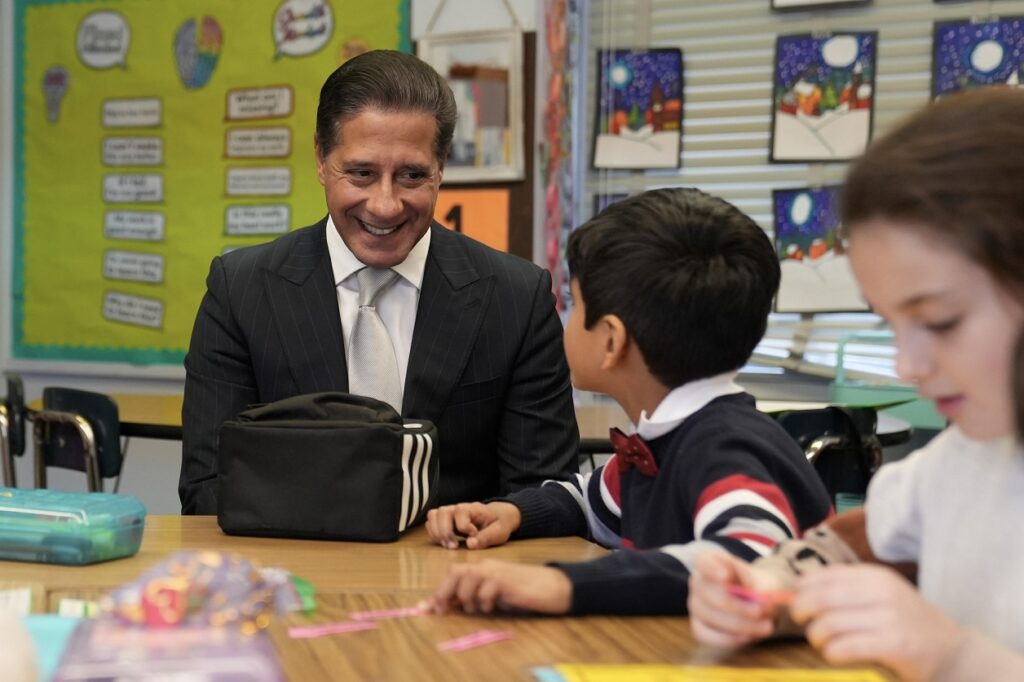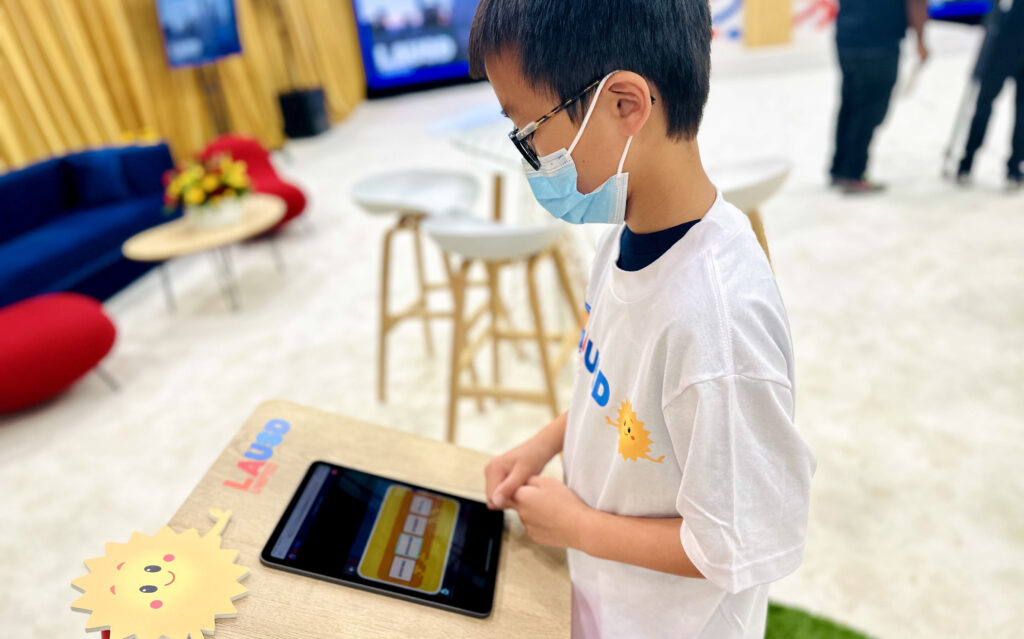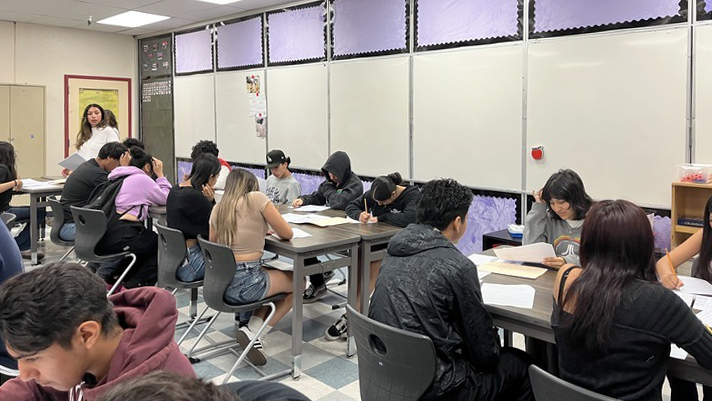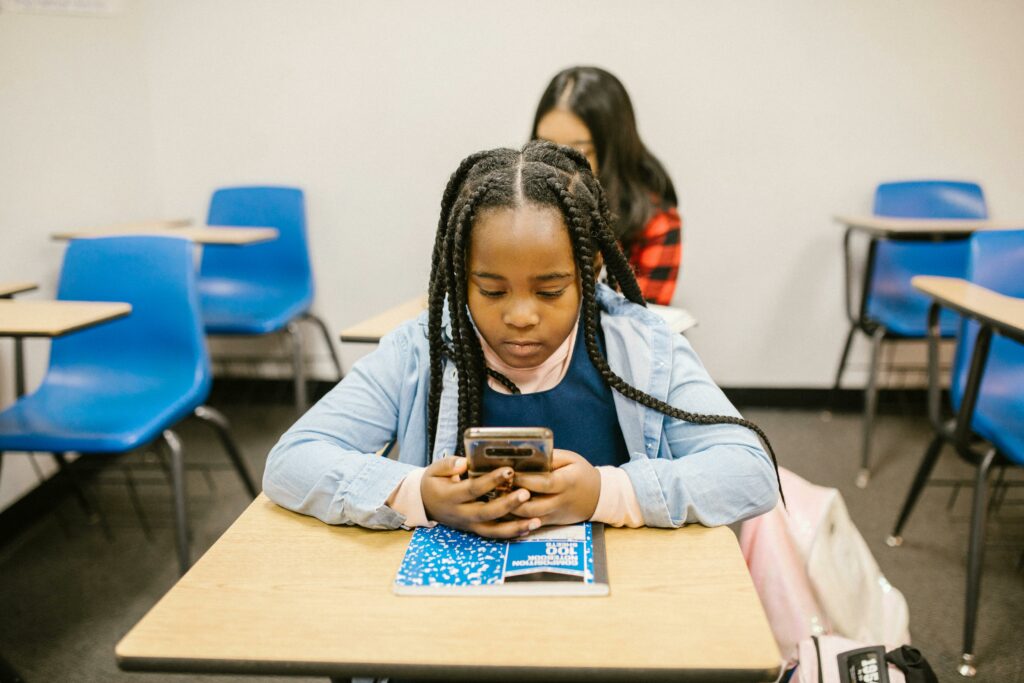
LAUSD Superintendent Alberto Carvalho interacting with a student.
Credit: LAUSD
This story has been updated to remove demographic data, which the CDE has reported may not be accurate.
Shortly after Alberto Carvalho became superintendent of LAUSD two years ago, he created a 100-day plan and named the district’s top 100 priority schools.
At the time, neither Carvalho nor district staff publicly identified the schools. However, LAUSD has continuously maintained that the schools are some of the district’s lowest-performing campuses in all measures, and that they would serve as the focal point of various district initiatives, such as decisions on adding additional instructional days to help students recover from pandemic learning loss and the new policy precluding charter schools from sharing their campuses.
LAUSD’s 100 priority schools, which is being made public for the first time because EdSource sought it, were selected based on considerations about what schools had the greatest need to improve in areas such as attendance rates, performance on the state Smarter Balanced Assessment and interim assessments, rates of completion of college-required courses (known as A-G), and proportion of students who are English learners, a district spokesperson said in a statement to EdSource this month.
The district also ensures that the principals of these priority schools participate in special programs where they can identify and express their schools’ special needs in academics, facilities or human resources.
The principals then receive an immediate response from support personnel with the goal of rapidly accelerating student achievement, the district spokesperson said.
EdSource does not have accurate demographic data for the 100 Priority Schools or the district because California Department of Education’s DataQuest website has noted inaccurate reporting from LAUSD.
Schools on the LAUSD priority list
- 107th Street Elementary School
- 109th Street Elementary School
- 112th Street Elementary School
- 28th Street Elementary
- 42nd Street Elementary School
- 49th Street Elementary School
- 52nd Street Elementary School
- 54th Street Elementary
- 59th Street Elementary
- 75th Street Elementary
- 93rd Street Elementary
- 95th Street Elementary
- Alta Loma Elementary School
- Dr Maya Angelou Community Senior High
- Aragon Avenue Elementary
- Audubon Middle School
- Bancroft Middle School
- Bethune Middle School
- Blythe Street Elementary School
- Tom Bradley Global Awareness Magnet
- Budlong Avenue Elementary School
- Bushnell Way Elementary School
- Camellia Avenue Elementary
- George Washington Carver Middle School
- Century Park Elementary School
- Cesar Chavez Elementary School
- Cimarron Avenue Elementary
- Johnnie L. Cochran Jr. Middle School
- Coliseum Street Elementary
- Columbus Avenue Elementary
- Compton Ave Elementary School
- Contreras Learning Center-School of Social Justice
- Crenshaw High School STEMM Magnet
- Susan Miller Dorsey Senior High
- Charles Drew Middle School
- Mervyn M. Dymally High School
- Thomas Alva Edison Middle School
- Lovelia P Flournoy Elementary
- John C. Fremont Senior High
- Gage Middle School
- Samuel Gompers Middle School
- Grape Street Elementary
- Florence Griffith Joyner Elementary School
- Haddon Avenue Elementary
- Harmony Elementary School
- Harrison Street Elementary
- Bret Harte Preparatory Middle School
- Augustus F. Hawkins High School
- Hillcrest Drive Elementary
- Hillside Elementary
- Holmes Avenue Elementary
- Hooper Avenue Elementary
- Thomas Jefferson Senior High
- Dr James Edward Jones Primary Center
- Jordan High School
- Martin Luther King Jr. Elementary
- La Salle Avenue Elementary
- Gerald A. Lawson Academy of the Arts, Mathematics and Science
- Limerick Avenue Elementary
- Los Angeles Academy Middle School
- John W. Mack Elementary
- Charles Maclay Middle School
- Main Street Elementary
- Manhattan Place Elementary
- Mann UCLA Community School
- Manual Arts Senior High School
- Marina Del Rey Middle School
- Edwin Markham Middle School
- McKinley Avenue Elementary
- Miramonte Elementary
- John Muir Middle School
- Murchison Street Elementary
- Napa Street Elementary
- Nevin Avenue Elementary
- Normandie Avenue Elementary
- Northridge Middle School
- Norwood Street Elementary School
- Barack Obama Global Preparation Academy
- Panorama High School
- Rosa Parks Learning Center
- Pio Pico Middle School
- Marguerite Poindexter LaMotte Elementary
- Leo Politi Elementary School
- Ramona Elementary
- Sally Ride Elementary: A SMArT Academy
- Carlos Santana Arts Academy
- Francisco Sepulveda Middle School
- Sheridan St Elementary School
- Hilda L Solis Learning Academy
- Southeast Middle School
- Trinity Street Elementary
- Valerio Street Elementary School
- Van Nuys Middle School
- George Washington Preparatory Senior High
- Lenicia B Weemes Elementary
- West Athens Elementary
- Western Avenue T.E.C.H. Magnet
- Charles White Elementary School
- Woodcrest Elementary
- YES Academy
Enrollment numbers at LAUSD’s priority schools
LAUSD’s overall enrollment, excluding charter schools, is 533,495. Based on census day enrollment data from the 2022-23 academic year, 53,959 students attend the district’s priority schools.
Of the 100 priority schools, there are 12 high schools, 20 middle schools and 63 elementary schools. Two are listed as K-12 schools, while three are alternative schools of choice.
Chronic absenteeism rates
The schools sustained a chronic absenteeism rate of 38.2% in the 2022-23 academic year, meaning that 38.2% of students missed at least 10% of school.
LAUSD on the whole, however, sustained a 32.8% rate of chronic absenteeism.
Performance on state assessments
Just over 23% of students attending priority schools have met or exceeded English standards, while 16.12% have met or exceeded math standards.
By comparison, across the district, 41.17% of students met or exceeded state standards in English, according to Smarter Balanced test results, while 30.5% met or exceeded state standards in math.
High school graduation rates
During the 2022-23 academic year, LAUSD sustained a graduation rate of 90.4, while, on average, nearly 80.74% of students enrolled at Priority high schools graduated.
Rate of A-G requirements completion
Across LAUSD, 43.8% of students in the 2022-23 academic year did not complete the A-G requirements and were thus ineligible for admission to the California State University and University of California systems.
At the priority schools, however, 69.18% graduates did not complete their A-G requirements.
Yuxuan Xie, EdSource data visualization specialist, contributed data analysis to this report.






